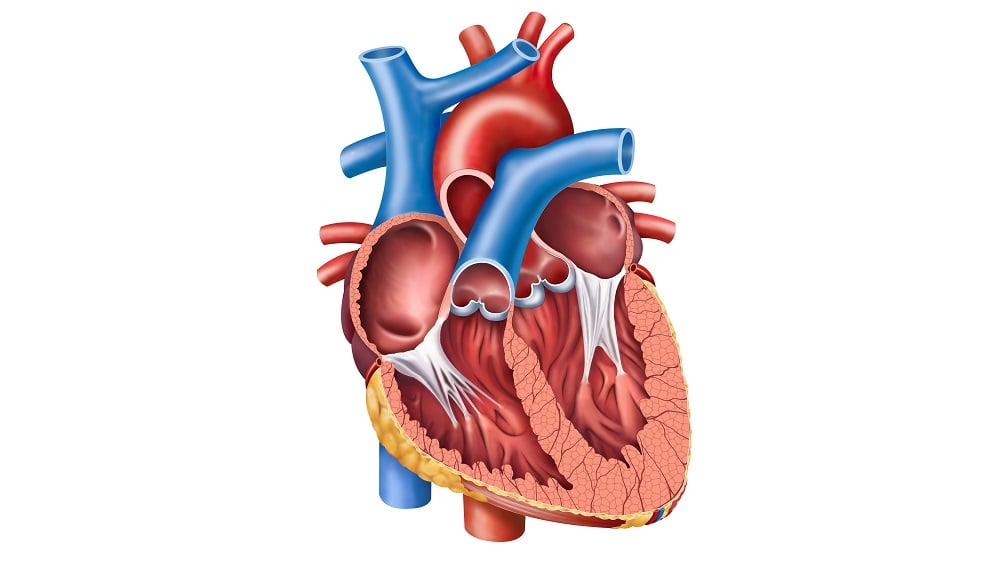In Aging Cell, researchers have published their findings on how the right ventricle of the heart ages differently from the left one.
Not just organs, but parts of organs
Research on aging has agreed that organs age differently: that the arteries, brain tissue, muscles, and skin, along with all of the various digestive and maintenance organs, all have their own unique issues and challenges related to aging.
It appears that this heterogeny even applies to specific parts of organs as well. Previous research has found that the right ventricle (RV), which drives deoxygenated, venous blood into the lungs, is critical in the prognosis of age-related heart diseases [1]. However, many drugs that work against failures of the left ventricle (LV), which drives oxygenated blood through the body, are ineffective against RV failure [2] and may even make the problem worse [3]. Such facts have led researchers at the National Heart, Lung, and Blood Institute to state that, despite these both being ventricles of the heart, they must be handled as different entities [4].
Part of the problem is that aging of the LV is well-documented as being characterized by hypertrophy [5], while studies on RV aging are murky and occasionally contradictory. Therefore, these researchers sought to identify the differences between LV and RV aging on both the physical and molecular levels.
Gene expression was different between sexes and ventricles
In these experiments, young mice were between 2 and 4 months old, while aged mice were between 18 and 20 months old. While the volumes of both ventricles increased with aging, older animals had thicker walls of the LV while the walls of the RV were thinner, and this was found to be true for both males and females. This finding was accompanied with detailed information on various physical measurements of the heart.
One core finding was that the RV experienced systolic dysfunction: an inability to sufficiently contract and pump blood. Various metrics used to quantify ejection fraction confirmed this: with aging, more blood remained in the RV after each pump. The RVs of female mice remained consistent throughout life, but males’ became more elastic.
A gene expression analysis found that female mice had far more genes that changed with aging in both ventricles than male mice did, partcularly in the LV, which had thousands of these differentially expressed genes, compared to under two hundred in the RV and only a few dozen for males in both ventricles. The researchers suspected that this was related to estrogen; estrogen receptor expression was reduced in the LV of female mice with age, but not the RV. This resulted in female mice having only 2% of age-related expression changes coinciding between the ventricles, while 11% (only six genes) coinciding between the ventricles in males.
Many of these genes were different for both males and females; in some cases, they were even opposed, with genes that were upregulated in males being downregulated in females. However, both sexes had inflammatory genes that were upregulated in both ventricles, highlighting inflammation as a key potential target for future interventions.
While this study provided valuable information, the researchers were unable to prove a chain of causality; they were not able to link individual genes to specific effects in either males or females. Further work will need to be done to determine what, if any, of these changes to metabolism translate into targets that are amenable to interventions and whether or not these mouse findings apply to human beings. However, it is clear from this and previous work that the right ventricle indeed needs to be targeted as its own aging organ.
Literature
[1] Goliasch, G., Zotter-Tufaro, C., Aschauer, S., Duca, F., Koell, B., Kammerlander, A. A., … & Bonderman, D. (2015). Outcome in heart failure with preserved ejection fraction: the role of myocardial structure and right ventricular performance. PloS one, 10(7), e0134479.
[2] Borgdorff, M. A., Bartelds, B., Dickinson, M. G., Steendijk, P., & Berger, R. M. (2013). A cornerstone of heart failure treatment is not effective in experimental right ventricular failure. International journal of cardiology, 169(3), 183-189.
[3] Prisco, S. Z., Thenappan, T., & Prins, K. W. (2020). Treatment targets for right ventricular dysfunction in pulmonary arterial hypertension. Basic to Translational Science, 5(12), 1244-1260.
[4] Borgdorff, M. A., Dickinson, M. G., Berger, R. M., & Bartelds, B. (2015). Right ventricular failure due to chronic pressure load: What have we learned in animal models since the NIH working group statement?. Heart failure reviews, 20, 475-491.
[5] Lakatta, E. G., & Levy, D. (2003). Arterial and cardiac aging: major shareholders in cardiovascular disease enterprises: Part II: the aging heart in health: links to heart disease. Circulation, 107(2), 346-354.








